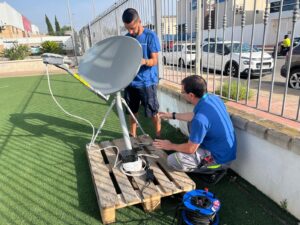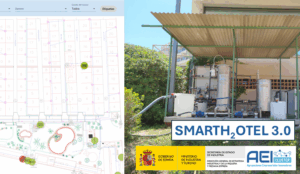The diversification of energy sources that is currently being sought is now complemented by the results of the A-LEAF project, coordinated by José Ramón Galán-Mascarós of the Catalan Institute of Chemical Research (ICIQ-CERCA) and involving scientific institutions from France, Germany, Italy, and Switzerland.
This research initiative on artificial photosynthesis, one of the largest funded by the European Commission, consists of an autonomous device capable of converting carbon dioxide (CO2) and water (H2O) into fuels using solar light, similar to how plants carry out photosynthesis.
The innovative cell developed by the team provides a solar-to-fuel conversion efficiency of over 10%, reaching world record current densities without the use of critical materials. This demonstrates that sustainability and high productivity can also be achieved with scalable and low-cost materials, according to the researchers.
Furthermore, they introduce the new concept of producing hydrogen (H2) and a storage element or ‘format’ simultaneously, with the latter being used to later generate it in the absence of solar light. This solution allows for the first time a continuous (24/7) production of hydrogen through an artificial leaf device.
“A-LEAF was a truly interesting and challenging project, and ending with a highly efficient prototype has been the icing on the cake,” says Professor Javier Pérez-Ramírez from ETH in Zurich.
This approach was validated in a compact architecture of an electrochemical flow cell, with electrodes based on copper and sulfur (Cu-S) and nickel, iron, and zinc oxide (Ni-Fe-Zn, for proton and CO2 reduction and oxygen evolution reactions, respectively) supported on gas diffusion electrodes, integrated with a low-cost silicon photovoltaic module. The cell operates at a current density of around 17 milliamp per square centimeter (mA cm−2) and a voltage of 2.5 volts (stable for over 24 hours and during on-off operations), providing a format productivity above 190 micromoles per square meter per second (μmol h−1 cm−2).
The results of this study pave the way for the implementation of affordable artificial leaf systems in the future energy scenario, providing a sustainable solution to the major challenge of achieving energy transition and transforming the current centralized model into a distributed one.
“This is the first example of an artificial leaf with an order of magnitude higher efficiency than a natural leaf. This significant step would not have been possible without the close interaction and collaboration of many research centers with multidisciplinary competencies. We are now looking to implement the next step to create a large-scale prototype to demonstrate industrial feasibility,” explains Professor Siglinda Perathoner from the Università degli Studi di Messina (Italy).
The A-LEAF technology is ready for further scale-up and optimization, with the ultimate goal of building an artificial tree, supporting the dream of a sustainable future, according to the authors. “Beyond the productivity numbers, our greatest success was bringing together a European team of world leaders in their different fields of research to work together towards a common goal: demonstrating that an artificial leaf can also function when built exclusively with affordable materials offering a record performance in this cutting-edge technology,” concludes Galán-Mascarós.
Referrer: MiMub in Spanish









